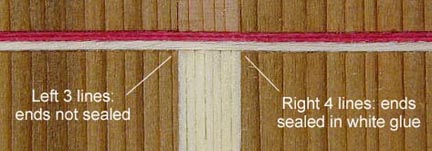Not to hijack this thread, but I'm wondering about this sealing with shellac. I see that LMI sells shellac in association with it's french polishing supplies. It's in a flake (?) form that is dissolved in alcohol (?). Is this the stuff that you guys are using? In the lightest possible color? Will it alter the natural color of the woods? Can you apply it before filling the pores? Help. A little tutorial would be much appreciated.

Eric

